
Expressionism is a modernist movement, initially in poetry and painting, originating in Northern Europe around the beginning of the 20th century. Its typical trait is to present the world solely from a subjective perspective, distorting it radically for emotional effect in order to evoke moods or ideas. Expressionist artists have sought to express the meaning of emotional experience rather than physical reality.
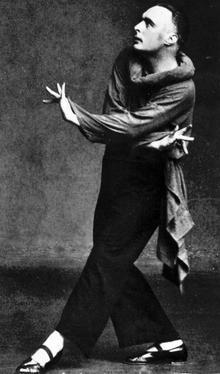
Rudolf (von) Laban, also known as Rudolph von Laban, was an Austro-Hungarian, German and British dance artist, choreographer and dance theorist. He is considered a "founding father of expressionist dance", and a pioneer of modern dance. His theoretical innovations included Laban movement analysis and Labanotation, which paved the way for further developments in dance notation and movement analysis. He initiated one of the main approaches to dance therapy. His work on theatrical movement has also been influential. He attempted to apply his ideas to several other fields, including architecture, education, industry, and management.

Kurt Jooss was a famous German ballet dancer and choreographer mixing classical ballet with theatre; he is also widely regarded as the founder of Tanztheater. Jooss is noted for establishing several dance companies, including most notably, the Folkwang Tanztheater, in Essen.
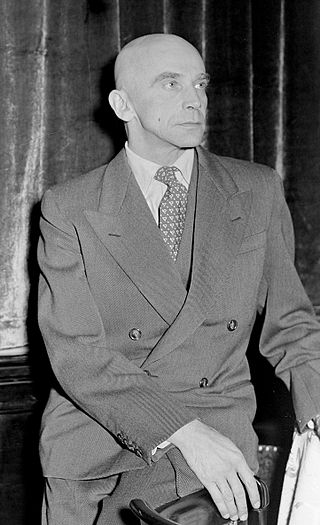
Harald Kreutzberg was a German dancer and choreographer associated with the Ausdruckstanz movement, a form in which the individual, artistic expression of feelings or emotions is essential. Though largely forgotten by the 21st century, he was the most famous German male dancer of the 20th century.
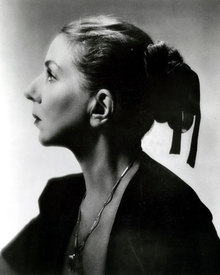
Hanya Holm is known as one of the "Big Four" founders of American modern dance. She was a dancer, choreographer, and above all, a dance educator.

Mary Wigman was a German dancer and choreographer, notable as the pioneer of expressionist dance, dance therapy, and movement training without pointe shoes. She is considered one of the most important figures in the history of modern dance. She became one of the most iconic figures of Weimar German culture and her work was hailed for bringing the deepest of existential experiences to the stage.

Philippine "Pina" Bausch was a German dancer and choreographer who was a significant contributor to a neo-expressionist dance tradition now known as Tanztheater. Bausch's approach was noted for a stylized blend of dance movement, prominent sound design, and involved stage sets, as well as for engaging the dancers under her to help in the development of a piece, and her work had an influence on modern dance from the 1970s forward. Her work, regarded as a continuation of the European and American expressionist movements, incorporated many expressly dramatic elements and often explored themes connected to trauma, particularly trauma arising out of relationships. She created the company Tanztheater Wuppertal Pina Bausch, which performs internationally.
The German Tanztheater grew out of German Expressionist dance in Weimar Germany and 1920s Vienna, and experienced a resurgence in the 1970s.

Susanne Linke is an internationally renowned German dancer and choreographer who is one of the major innovators of German Tanztheater, along with Pina Bausch and Reinhild Hoffmann.

Modern dance is a broad genre of western concert or theatrical dance which includes dance styles such as ballet, folk, ethnic, religious, and social dancing; and primarily arose out of Europe and the United States in the late 19th and early 20th centuries. It was considered to have been developed as a rejection of, or rebellion against, classical ballet, and also a way to express social concerns like socioeconomic and cultural factors.

Valeska Gert was a German dancer, pantomime, cabaret artist, actress and pioneering performance artist.
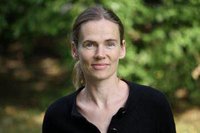
Heike Hennig is a German dancer, choreographer and director of the opera and dance ensemble "Heike Hennig & Co".
Lilian Harmel was an Austrian dancer, choreographer and pedagogue.

Hilde Boman-Behram was an expressionist dancer, choreographer and dance teacher whose pioneering work in integrated dance transformed modern dance.

Sigurd Leeder was a German dancer, choreographer and dance education theorist. He was born in Hamburg on 14 August 1902, the son of Carl Eduard Gottfried Leder, lithographer, and Martha Auguste Anna Henriette Friedrich. He died in Herisau, Switzerland, on 20 June 1981. He developed a method of teaching expressive dance and contributed, with Albrecht Knust, to the development and dissemination of labanotation, which pioneered the written language of symbols to record and represent modern dance.

Pola Nirenska, born Pola Nirensztajn, was a Polish performer of modern dance. She had a critically acclaimed if brief career in Austria, Germany, Italy, and Poland in the 1930s before fleeing the continent in 1935 due to rising antisemitism. She spent 14 years in the United Kingdom, primarily entertaining refugees, troops, and war workers. She emigrated to the United States in 1949 and settled in Washington, D.C., where she was widely acknowledged as the city's leading choreographer and performer of modern dance until her death.
Wolfgang Martin Schede was a German writer, dancer, actor, choreographer, artist and photographer. He was credited with being for men's expressionist dance what Mary Wigman was for women's dance. After the experiment of running an expressionist theatre in Cologne, he founded a dance school there in 1923, and worked at the Theater Dessau from 1925. After World War II, he turned to writing, art and photography.

Katja Wulff, also Käthe Wulff,, was a German-Swiss expressionist dancer (Ausdruckstänzerin) and dance instructor. She attended Rudolf von Laban's dance classes and became associated with the Dada movement. She ran a dance school and was still teaching there at the age of 90.
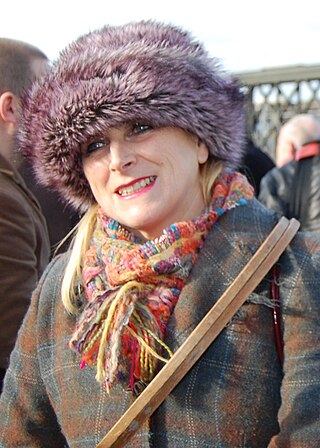
Liz Aggiss is a British live artist, dance performer, choreographer and film maker. Her work is inspired by early 20th century Ausdruckstanz, in particular the Grotesque dance of Valeska Gert, and by British Music Hall and Variety acts such as the eccentric dance performers, Max Wall and Wilson, Keppel and Betty. She is often described as the 'grand dame of anarchic dance'.
Fritz Böhme was a German dance publicist and cultural journalist.






















